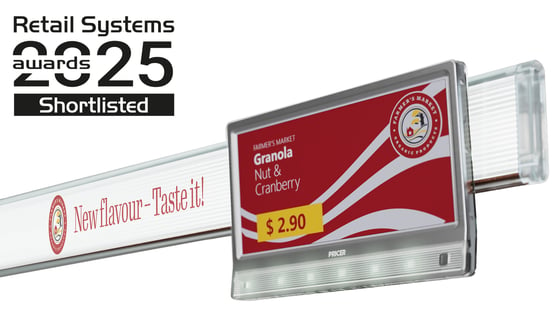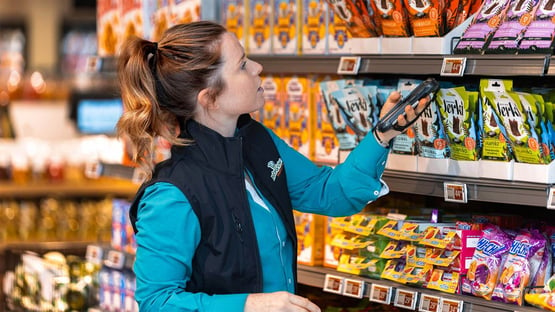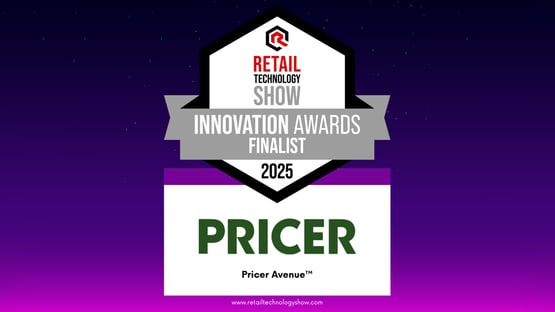The physical store is rapidly transforming from a static environment into a dynamic, data-driven ecosystem, and the shelf-edge is at the heart of this evolution, enabling retailers to automate operations, adapt pricing in real time, reduce waste, enhance customer communication and unlock new revenue streams, explains Finn Wikander, Chief Product Officer at Pricer.
As operational costs rise, consumer demands shift and labour shortages intensify, retailers are searching for innovative ways to stay competitive. The challenge is how to balance operational efficiency with customer engagement – and to be able to do so in real time.
At the heart of this shift are Electronic Shelf Labels (ESLs). Once seen as simple tools for automating price updates, ESLs are evolving into dynamic communication platforms that are reshaping store operations, customer engagement and shopper experiences.
From automation to intelligent retail ecosystems
One of the biggest advantages of ESLs is their ability to automate a range of updates across multiple locations in real time. Operating through cloud-based platforms, retailers can manage pricing, run promotions and update product information remotely, ensuring consistency and accuracy across every store. 
This eliminates manual product tagging, a task that is not only time-consuming and prone to human error, but increasingly unpopular with younger retail workers. As hiring becomes more difficult, automating repetitive tasks is no longer just a nice-to-have; it’s essential.
With ESLs handling the operational heavy lifting, store associates are freed up to focus on what matters most: delivering great customer service and enhancing the in-store experience. These systems also help generate restocking and replenishment schedules, removing the manual guesswork from store operations and making each labour hour more valuable. This is a solid business case in its own right, but the benefits do not stop there.
The rise of dynamic pricing
Perhaps the most exciting frontier for ESLs is dynamic pricing. Because ESLs allow store-wide or estate-wide price changes at the push of a button, they make it possible for retailers to adjust prices in response to real-time events. These include demand fluctuations, inventory levels, competitor actions, weather patterns, local sporting events and even customer foot traffic.
As this adds more complexity, the management of dynamic pricing will increasingly rely on AI-powered platforms. By gathering data from multiple inputs – labels, shelf sensors and AI-powered cameras – and combining it with both historical sales data and external events, including weather, these platforms will provide retailers with actionable insights that inform price changes, planogram adjustments and replenishment schedules.
In this way, ESLs become part of a larger ecosystem of intelligent solutions that help retailers solve old problems and tackle new challenges.
Reducing waste through real-time data
Dynamic pricing and smart shelf-edge communication have another critical role to play – reducing food waste. For grocers, waste isn’t just an ethical and environmental issue; it erodes profit margins and disrupts supply chains. The answer lies in real-time data and continuous inventory tracking.
Traditional approaches to waste management are slow and fragmented, relying on outdated processes and software that only tackle part of the problem. Real-time data changes this. AI-driven solutions, combined with ESLs and monitoring devices, enable retailers to track inventory levels minute by minute, make intelligent markdown decisions and adjust ordering patterns, all based on actual demand and real conditions.
By layering in those other variables – weather, location, time of day and events – AI can generate tailored, attractive offers that not only reduce waste, but also maximise profitability. In other words, waste management becomes part of a sophisticated pricing, promotion and customer engagement strategies.
Enhancing customer communication
ESLs, so beneficial on the operational side in terms of efficiency and profitability, also play a key role in enhancing communication with customers, delivering clear, consistent and real-time information at the point of decision. This improves trust, drives higher basket values and increases customer loyalty.
As ESLs evolve into more than just price tags, they become digital touchpoints that can show dynamic promotions, sustainability credentials, origin information, recipe suggestions and much more, transforming the humble shelf edge into a rich storytelling canvas.
The shelf edge as a Retail Media opportunity
Retail Media Networks (RMNs) are taking this evolution even further by connecting the on and offline worlds. RMNs allow retailers to monetise their in-store environment by serving targeted, location-based advertisements to shoppers. Based on customer purchase history, preferences and proximity to products, these ads can be delivered via digital signage and integrated seamlessly with ESL content.
Imagine a customer walking past a product and seeing a personalised offer pop up on both a nearby screen and the shelf-edge label. At the same time, that same offer could be pushed directly to their phone via a retailer’s membership/loyalty app, enabling them to save the promotion and redeem it effortlessly at checkout. This seamless connection between the physical and digital worlds ensures that in-store engagement extends beyond the shelf edge, strengthening customer interaction and driving higher conversion rates.
For retailers, this creates an entirely new revenue stream, selling advertising space not just online but inside the physical store, arguably where consumers are more likely to convert. For brands, it offers a powerful way to reach shoppers in the critical moments of decision-making. And for customers, it enhances the shopping experience with relevant, timely offers that feel genuinely personalised.
The connected store future
The future of shelf-edge communication is a connected ecosystem where ESLs, IOT devices, data insights, AI and Retail Media Networks all converge.
Retailers who embrace this future will be able to reduce labour costs and improve associate satisfaction by automating mundane tasks; increase pricing accuracy and agility, allowing them to react to real-time events; reduce waste and protect margins through better inventory management; drive customer engagement with targeted, relevant, real-time messaging; and monetise their store environment through in-store advertising opportunities.
As technology continues to evolve, the physical store is no longer static. It’s becoming just as dynamic, responsive and targeted as ecommerce — and the shelf-edge is leading the charge.
Do you want to explore more about in-store communication solutions for your stores? Get in touch with Pricer and we will help you out!
This article was originally published in the ISN Magazine on April 16, 2025.



